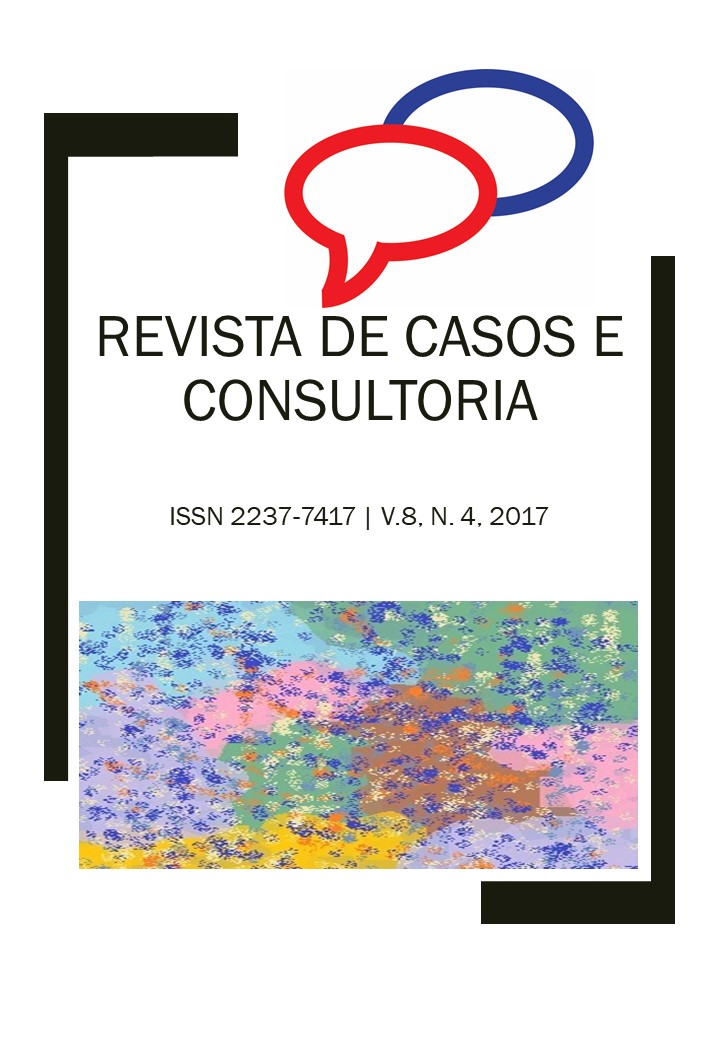USE OF THE THEORY OF REAL OPTIONS IN A CASE STUDY FOR EVALUATION OF EXCHANGE OF POINT OF SALE TO SHOPPING CENTER RETAIL SHOP
Keywords:
Real Option Valuation / Theory. NPV. Investment analysis. Business strategy.Abstract
In this work, the Real Options Theory was used to analyze the feasibility of opening a new point of sale that included a managerial flexibility to the project. This flexibility was illustrated by the possibility of a point-of-sale exchange after the opening of a shopping mall without burden on the increase of the square meter and / or contractual fine. In order to determine the value of this option, option of point exchange and increase of scale, the binomial method was used in a case study applied to a Brazilian company in the retail sector. The cash flows of the scenarios of the base case and the expanded case were prepared according to the internal premises of the company studied and then applied to the binomial model. The NPV calculated initially proved to be negative but when it had its value expanded by TOR it reached a positive value, changing the initial investment scenario. This work aimed to demonstrate not only the value of the option in general, but also to determine the maximum premium to be paid in a point of sale exchange option within a shopping mall and its competitive advantages. The maximum award was found for this case study, reaching the objectives of the work.
Downloads
References
ABRASCE, Associação Brasileira dos Shopping Centers. A Cushman & Wakefield Research Publication: MARKET POSITIONING RETAIL BRASIL, 2016. http://abrasce.com.br/monitoramento/publicacoes-de-pesquisas
BASILIO, João Augusto. Shopping centers. Renovar, 2005.
BEZERRA, Demetrio Arthur Caixeta Gomes de. Aplicação do valor presente líquido generalizado em fluxos de caixa não convencionais. 2016
BRITO, Aclevia da Cruz et al. A importância do uso de sistemas de informação: um estudo de caso em um escritório de contabilidade na cidade de Marabá-PA. Anais do IX SIMPROD, 2017.
CERVEIRA FILHO, Mário. Shopping Centers: direitos dos lojistas. 6 ª ed. São Paulo: Saraiva, 2010.
FACÓ, Júlio Francisco Blumetti. Vale a pena investir: Finanças e Inovação em uma Análise Interdisciplinar da Aplicação da Teoria de Opções Reais em um Cenário Incerto de Tríplice Epidemia. Simplissimo Livros Ltda, 2017.
FARIA, Vinicius Tasca; DE ANDRADE, Alexandre Acácio; FACÓ, Júlio Francisco Blumetti. Mensuração dos Impactos da Utilização de Processamento de Bancos de Dados em Processos de Inovação. 2017
JENSEN, Michael C.; BLACK, Fischer; SCHOLES, Myron S. The capital asset pricing model: Some empirical tests. 1972.
LAGASSI, Veronica. Breve Comentário Acerca da Alteração Sofrida na Lei do Inquilinato. Revista de Direito da Unigranrio, v. 4, n. 2, p. 17, 2011.
LUENBERGER, David G. Products of trees for investment analysis. Journal of Economic Dynamics and Control, v. 22, n. 8-9, p. 1403-1417, 1998.
MARTINEZ, A. L. Buscando o valor intrínseco de uma empresa: revisão das metodologias para avaliação dos negócios. Associação Nacional de Pós-Graduação em Administração, v.23, 1999.
PINTO, Dinah Sonia Renault. Shopping center: una nova era empresarial. Forense, 1989.
PORTON, Rosimere Alves de Bona; LONGARAY, André Andrade. Relevância do uso das informações contábeis nos processos decisionais. 2006.
REUER, Jeffrey. How real are real options? The case of international joint ventures. Creating value: Winners in the new business environment, p. 59-81, 2017.
RITCHKEN, Peter. Options: theory, strategy, and applications. Scott Foresman & Co, 1987.
TRIGEORGIS, Lenos; REUER, Jeffrey J. Real options theory in strategic management. Strategic Management Journal, v. 38, n. 1, p. 42-63, 2017.
VENOSA, Silvio de Salvo. Direito Civil: Teoria Geral das Obrigações e dos Contratos. 5 ed. São Paulo: Atlas, 2005
WANG, Tao; DE NEUFVILLE, Richard. Real options “in” projects. In: real options conference, Paris, France. 2005.
YIN, Robert K. Estudo de Caso-: Planejamento e Métodos. Bookman editora, 2015.

 Português (Brasil)
Português (Brasil) English
English Español (España)
Español (España)